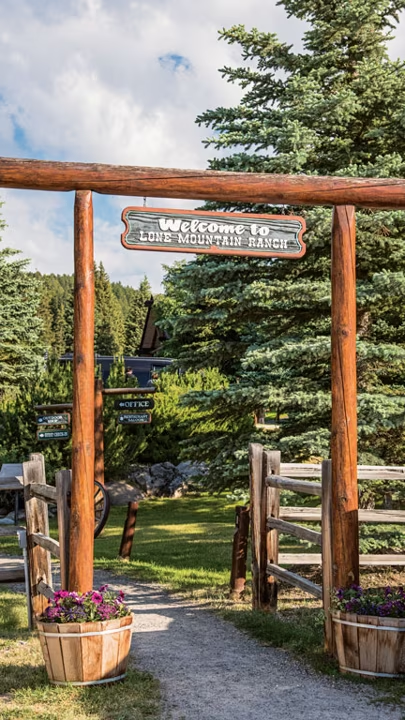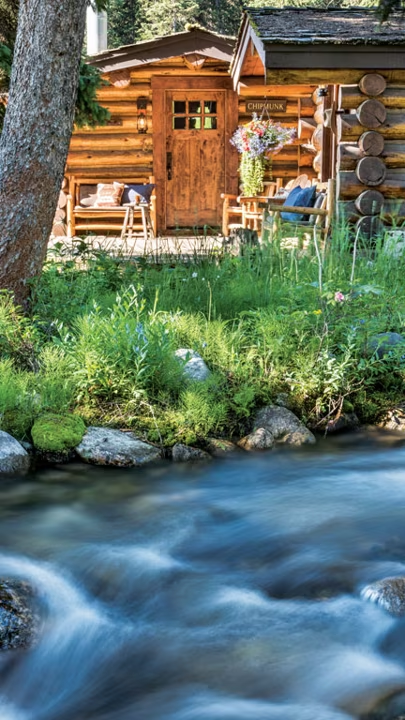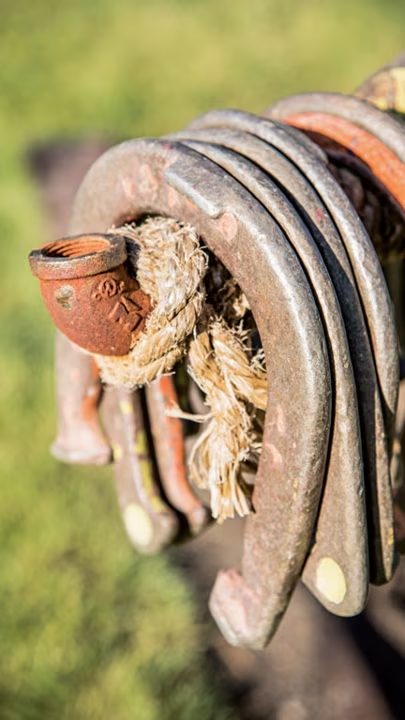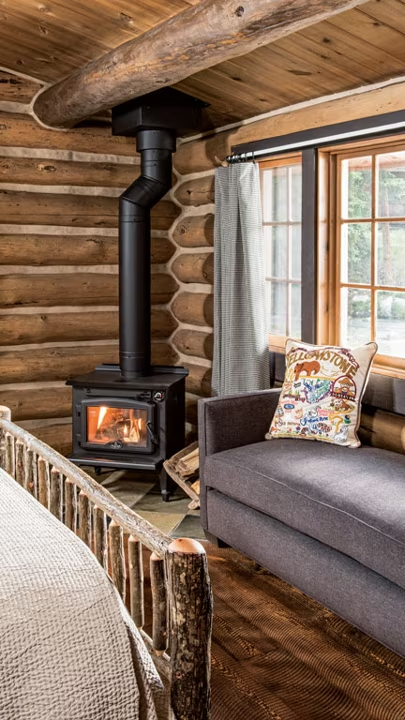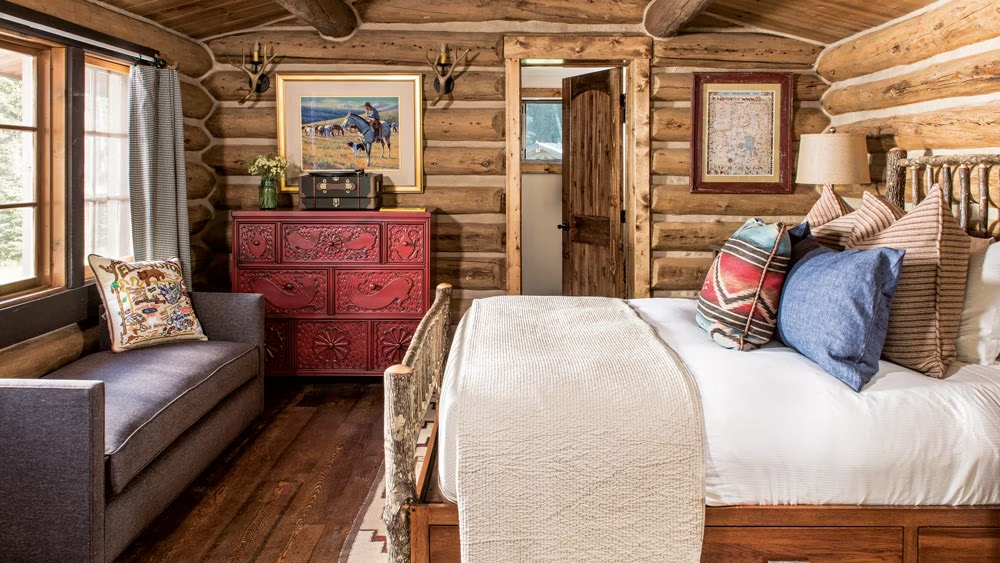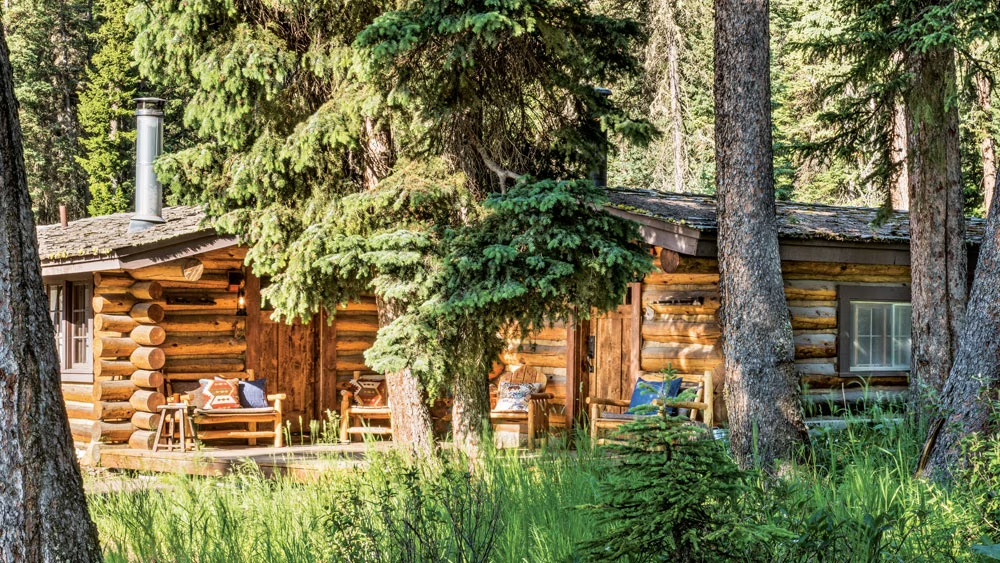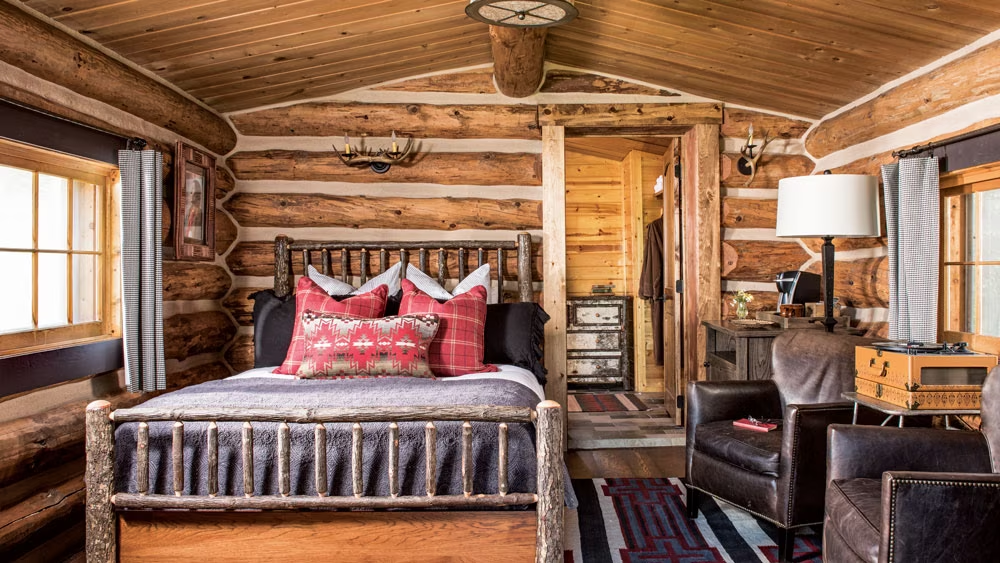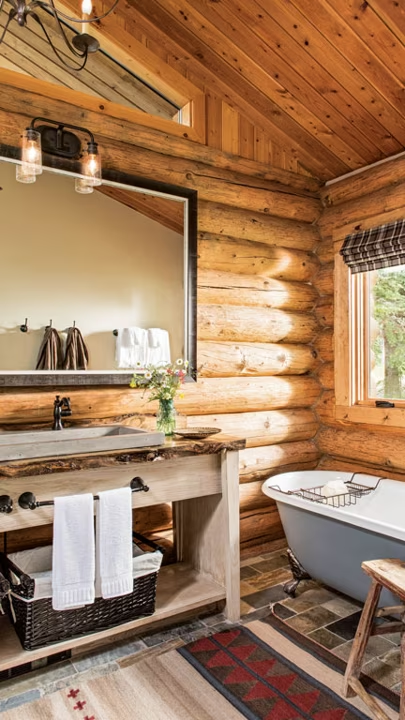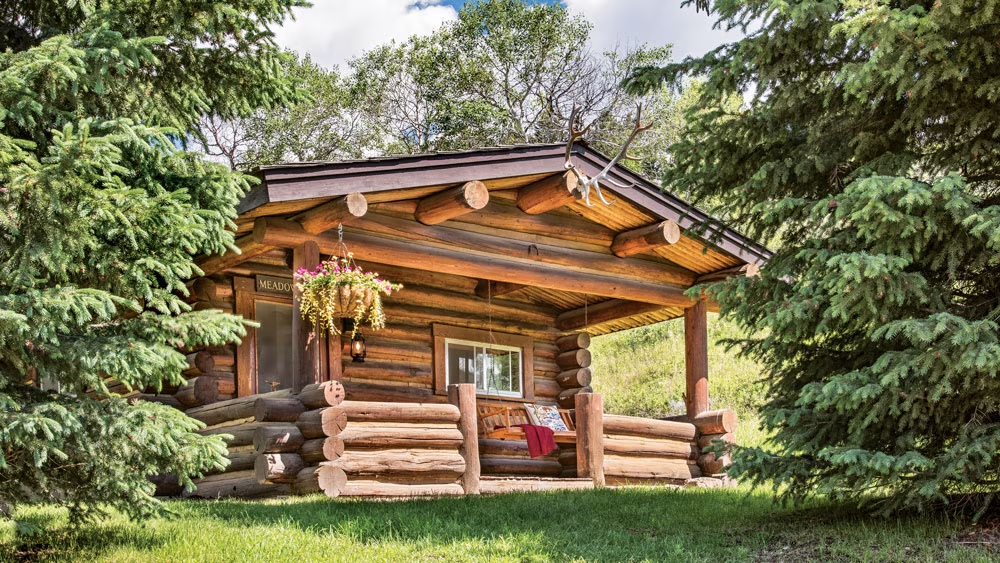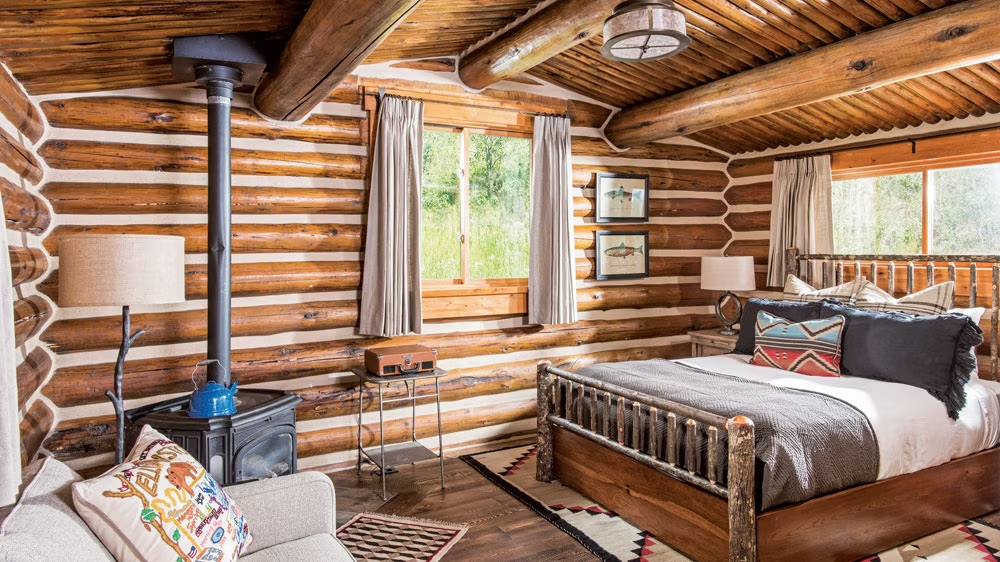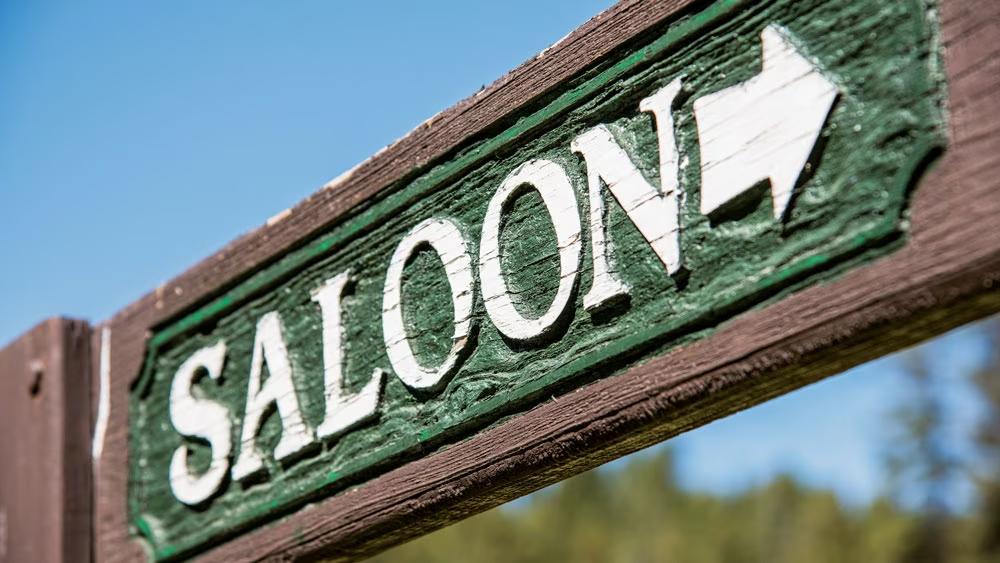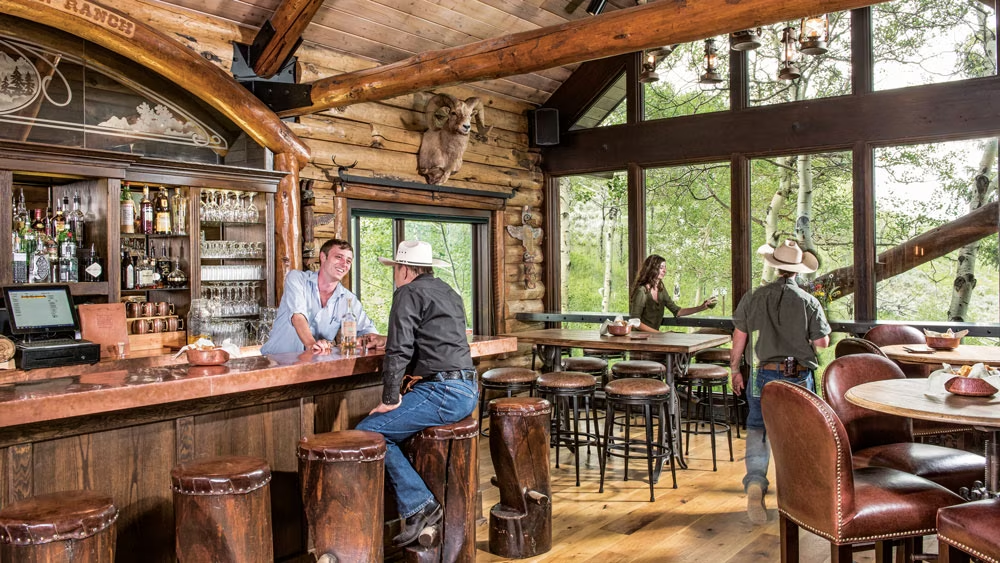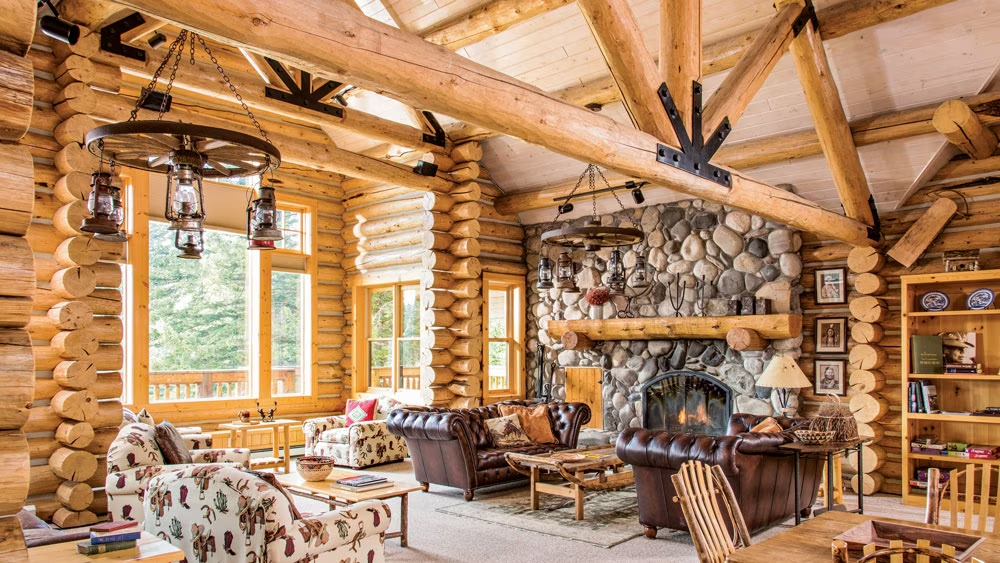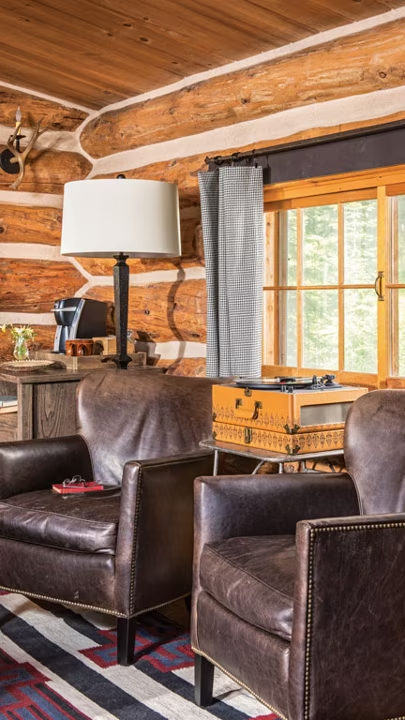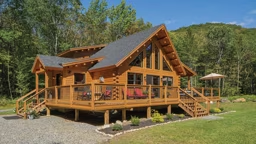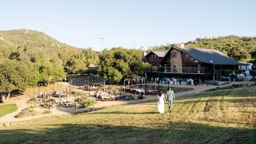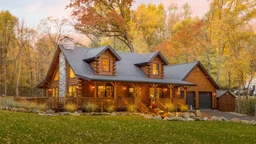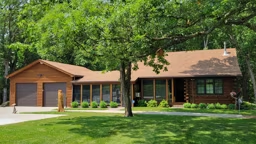Leaving the “no vehicles beyond this point” sign behind, my friend and assistant, Tia, and I amble past a horse corral, across a meadow and over North Fork Creek to arrive at Lone Mountain Ranch — our destination and my latest photographic assignment. Our log cabins are at the edge of the woods, wedged into a 90-degree bend in the creek and adjoined by a deck at the same angle. Lodgepole pines frame our views. The environment feels like a warm embrace.
“Chipmunk,” as my cabin is called, was one of the original structures built on this 100-year-old ranch. I’m the first guest to stay in this cabin since its recent restoration, but as I settle in, I wonder how many others before me have fallen to sleep inside these chinked log walls, listening to the rushing creek outside.
It all started in 1915 when Clarence Lytle homesteaded this property in Big Sky, Montana, as a working cattle and horse ranch. His brother and a friend built many of the original structures, corrals and fences. Twelve years later, a paper mill tycoon from Chicago bought the place for $50 an acre and sank an additional $110,000 into improvements and new cabins.
Native lodgepole harvested from the upper part of the property were wrapped in burlap, dragged down the mountain by teams of draft horses and then triple washed, notched and stacked on site. Each guest cabin featured linens that matched the wildflowers blossoming on their respective sod roofs.
After operating as a guest and dude ranch from the late 1920s to the mid 40s, Lone Mountain Ranch experienced its next metamorphosis when Earl and Louise Risser, along with Henrietta Joyce, purchased the ranch to use as a boys’ camp, hoping to instill values in young men with the help of an enterprising minister.
They offered horseback riding, swimming, fishing, gold panning, target practice and backpacking trips to nearby Yellowstone Park. In other words, it was utopia for youth. However, the boys were a bit exuberant, which didn’t translate well for cabin maintenance. As a result, the Rissers reverted back to dude ranching and eventually looked to sell.In the 1950s, a Minnesota man bought the ranch as a base for his logging operation, harvesting more of the coveted lodgepole pines and shipping them via railroad back to his home state.
At this point, the log buildings embarked on yet another transformation, as two of the cabins, “B-K” and “Hilltop,” were converted to schoolhouses. More than 70 children attended classes while their families lived on and worked the property. In 1955 Lone Mountain Ranch expanded to 11,000 acres and again reverted to a working dude ranch, billed as “a vacation for all the family.” The ranch changed hands a few more times until the Schaap family from West Yellowstone bought it in 1977 for use as a cross-country ski and year-round resort.
The Schaaps proved to be the property’s longest-running landlords, operating Lone Mountain Ranch for more than 30 years until Makar Properties purchased it in 2013.
With so much history etched into every log cabin, fence post and outbuilding, the new owner sought to preserve the ranch and “express the qualities of the region in every way.” He, along with his general manager, Paul Robertson, assembled a team of ranch staff, a local contractor and the interior design firm, River and Lime, to implement a three-phase plan of structural and aesthetic restoration.
All in, the refurbishment would affect 24 cabins of various ages, sizes and floor plans, two rental log homes, the restaurant, saloon, outdoor gear shop, bar and the once converted log schoolhouse.
“The undertaking emphasizes Makar Properties’ commitment to be a steward of this property and their desire to make it available to the public for perpetuity,” says Paul.
With summer fly-fishing trips on the world-renowned Madison and Gallatin Rivers, trail rides and rafting excursions, as well as sleigh rides, ice fishing and cross country skiing, guests arrive to enjoy the same activities that drew travelers a century ago, only now they’re a bit more comfortable when doing so.
My cabin, Chipmunk, was the original “cook’s cabin” with the icehouse as the adjoining cabin, now called Porcupine. A custom end table/disguised mini-frig serves as my personal icehouse today.
The cabins offer rustic elegance with luxuriant bedding and linens, contemporary bathrooms and just the right amount of modern conveniences alongside the heritage logs.
There’s only one way to get logs to look like this and that’s to let them sit there for nearly a century aging like fine Bordeaux. Just as each log is unique in its size, shape and character, each cabin differs in furnishings and decor style. Stone hearths provide warmth and focal design in some cabins while woodstoves accent others.
The “Ouzel” cabin features a four-poster, bark-clad log bed and a reclaimed-wood sliding barn door to the bathroom where there’s a claw-foot tub. A contemporary concrete sink contrasts the live-edge wood slab counter. These are the nuances of the renovation: Preserving character while adding new charm.
“Meadowlark,” the original gatekeeper’s cabin, offers a glass-and-tile shower with a slate floor in the bathroom. Burlap-like curtains in the main room hang over the very logs that were wrapped in the material seven decades earlier.
In the Bitterroot cabin, a white sheet-rocked wall with built-in cabinets and shelving offsets the log walls and defines a sitting area. Antique and vintage curiosities vary in each cottage: a milking stool, throwing darts, native baskets, woolen rugs, wooden bowls.
A nostalgic array of vintage records provides background music to the narrative of Lone Mountain Ranch. At full capacity, the facility accommodates 100 horses, 80 guests, 70 employees and one requisite ranch dog.
After a long day in the saddle, fly fishing or exploring Yellowstone Park, guests return to their cabins to find the porch lights on and their beds turned down. Chef Eric Gruber oversees the all-day process of smoking ribs, curing corned beef and baking fresh pies and breads.
The savory aromas serve as a dinner bell, calling folks to the log restaurant and saloon where they must decide between dishes like Crispy Skin Local Montana Trout with Warm Heirloom Potato and Root Vegetable Salad or Slow Braised Bison Shortrib Bourguignon.
A bison mount hangs over the massive stone hearth at one end of the dining room, where a live-edge wood slab table seats up to ten. Log trusses support the vaulted tongue-and-groove ceiling.
In the adjacent saloon, leather cushioned log post stools line up along the copper-topped bar. The stone fireplace, log beams and amiable bartender are a tip-of-the-hat to tradition, while contemporary touches also are evident in the floor-to-ceiling glass gable end wall and high back leather bar chairs. Each evening children are drawn to the central campfire like fireflies. They practice roping, roast marshmallows and assemble double-decker s’mores.
A staff member is on hand to dispense the goods and watch for flying embers. The Outdoor Youth Adventures staff meets each morning to discuss how best to engage and inspire each of their charges and alter the day’s activities accordingly.
 The approach is intentional; if the children are involved and having fun so, too, will the parents, whether they’re on separate or family outings. The logs used in these cabins stack up like pages in a history book, each with its own tale and footnotes.
The approach is intentional; if the children are involved and having fun so, too, will the parents, whether they’re on separate or family outings. The logs used in these cabins stack up like pages in a history book, each with its own tale and footnotes.
Back in my cabin for the evening, I select a Johnny Cash LP and play it on the phonograph while I take in my surroundings. If there were a TV in the room, I would have no desire to watch it. I’ve spent the day touring historic cabins, listening to guests recount their adventures and watching staff take genuine pleasure in the joy of their guests.
It’s the people who have made Lone Mountain Ranch the rare place that it is. Those who built and worked it over the years, those who continue to envision and sustain its future and those who return each year to enjoy it.




